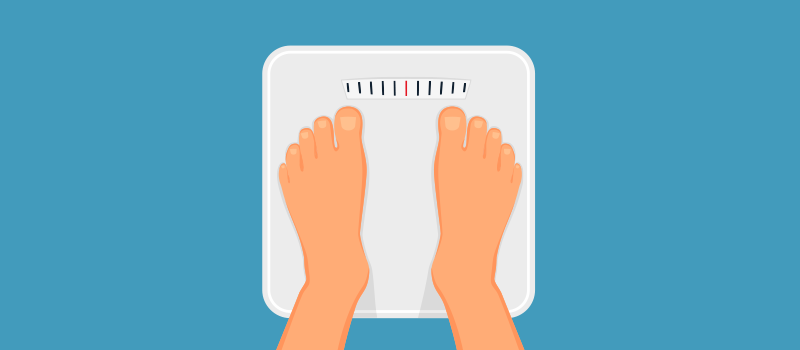What’s the Buzz
The Bee Healthy Blog
How Does Albuterol Work?

Key takeaways:
- Albuterol is a bronchodilator that works quickly to relieve asthmatic symptoms such as shortness of breath and wheezing.
- Using your albuterol inhaler as directed by your doctor is important to control your asthma or COPD in the long run. So if you feel like you need to use your albuterol inhaler more frequently than how it is prescribed, let your doctor know since it may be a sign of worsening asthma.
- Before using your inhaler, make sure to shake it well, and don’t forget to prime if the inhaler is being used for the first time or it has not been used for more than 14 days.
Approximately 25 million Americans suffer from asthma. Asthma is a chronic inflammatory disease of the airways, which is the breathing tube through which air moves from the nose or mouth to the lungs. If you have asthma, your airway is more sensitive to certain irritants. . When your airways come in contact with these irritants, it becomes swollen, with extra mucus being produced—This triggers symptoms such as shortness of breath, chest tightness, wheezing, and coughing as your body is trying to get rid of the extra mucus.
There is no cure for asthma, but the condition can be managed with proper treatment to prevent asthma attacks and provide relief during asthma attacks.
One of the medications that is commonly used to treat asthma symptoms, breathing difficulties during exercise, and other lung diseases such as COPD (chronic obstructive pulmonary disease) is called albuterol. It is available under various brand names, such as ProAir HFA, Ventolin HFA, Proventil HFA, and ProAir Respiclick.
Please continue reading to learn more about how this medicine works, how long it takes to relieve asthma symptoms, and how to use albuterol correctly.
How does Proventil HFA (albuterol) treat shortness of breath?
Asthma attacks occur due to bronchospasm (narrowing of the air passages in the lungs). Albuterol is classified as a short-acting beta-agonist (SABA). Albuterol, or SABA in general, is a bronchodilator. It works by relaxing the muscles around the airways in the lungs that get tightened during an asthma attack. This helps the airways open up, thus making breathing easier. Albuterol is also known for its role in blocking the release of chemicals in the body that are responsible for inflammation such as hives and allergy.
What happens after taking albuterol?
When used appropriately as directed by your doctor, albuterol should improve symptoms such as wheezing, coughing, trouble breathing, and chest tightness. In addition, if albuterol is taken to prevent exercise-induced asthma, it should prevent breathing difficulties during exercise.
How long does it take albuterol to work?
Albuterol is a quick-relief or rescue medication. It is used to decrease the symptoms of asthma during an asthma attack. The medication works quickly but not always immediately. You should notice an improvement in your symptoms within a few minutes to an hour of taking albuterol.
How quickly albuterol works will depend on the severity of your asthma symptoms. It will also depend on the form of the medication you use (liquid, tablet, or metered-dose inhaler). The inhaled form of albuterol is the fastest acting, so you should feel the relief of symptoms within minutes—other forms of the medicine work more slowly.
The effects of albuterol last for 4-6 hours or longer. Your doctor or pharmacist might advise you to carry your albuterol inhaler with you at all times for quick relief of symptoms in case of an asthma attack.
How does albuterol work so fast?
A lot of people don’t know that albuterol comes in different forms. Apart from aerosol sprays, such as ProAir HFA, Proventil HFA, and Ventolin HFA, albuterol is also available as oral tablets (immediate-release, extended-release), and oral syrup, However, keep in mind that the aerosol spray in the metered-dose inhaler or nebulizer is the one that works the fastest—you feel better only after a few minutes! The reason is that once you inhale the medication from the inhaler, it acts directly on your airway by relaxing the muscle around it. By doing so, albuterol inhalation provides quick relief from shallow breathing, chest tightness, coughing, and wheezing.
Does albuterol break up mucus?
Many people with asthma find that they cough up lots of phlegm (mucus from the lungs). Phlegm can be a sign of inflammation or infection. This extra mucus makes the airways narrower and causes worsening of asthma symptoms. Albuterol does not break up mucus. However, albuterol helps open up the airways, makes it easier to cough, and eliminates mucus.
What is the usual albuterol dose?
Your doctor or pharmacist will provide medical advice and tell you the correct albuterol dosage for you. Follow the directions from your doctor or pharmacist on how to use albuterol. Check your prescription label carefully to see how often you should use the medicine. The typical dosing is as below:
- For asthma: inhale 1 to 2 puffs by mouth every 4 to 6 hours as needed for difficulty breathing or wheezing.
- For prevention of exercise-induced asthma: Inhale 2 puffs by mouth 15 to 30 minutes before exercising.
Albuterol is considered a “rescue” or “reliever” medication—meaning albuterol is to be used as needed to relieve symptoms of asthma such as shallow breathing or wheezing. Albuterol is not designed to be used on a regular schedule. If you have asthma, more than likely, in addition to albuterol, your doctor will prescribe you another inhaler to be used routinely. This routine inhaler contains a long-acting beta-agonist and an inhaled corticosteroid—this inhaler is to be used routinely, and it works to prevent asthmatic symptoms.
Store your albuterol inhaler at room temperature away from excessive moisture and heat. Do not puncture the aerosol canister or discard it in a fire or incinerator. The nebulizer solution can be stored at room temperature or in the refrigerator. Keep unused vials of nebulizing solution in the original foil pouch until you are ready to use them.
What is the correct way to use albuterol?
Albuterol is available as a liquid solution (a special machine called a jet nebulizer turns the liquid albuterol into a fine mist that can be inhaled by mouth). Albuterol also comes as a powder (ProAir Respiclick) or aerosol for inhalation (ProAir HFA, Ventolin HFA, Proventil HFA). Here are some brief guidelines on how to use albuterol:
To inhale albuterol aerosol with an inhaler:
- Remove the cap from the mouthpiece of the canister.
- Prime the inhaler if you are using it for the first time, using it after more than 14 days, or have dropped the inhaler. To do this, shake the canister well and release 4 sprays into the air, away from your face.
- Breathe out through your mouth.
- Hold the canister with the mouthpiece at the bottom.
- Close your lips tightly around the mouthpiece and breathe in slowly while releasing the spray of albuterol into your mouth. Do not breathe through your nose. Make sure your fingers are not blocking the vent.
- Hold your breath for about 10 seconds, remove the inhaler, and breathe out slowly.
- If you need 2 puffs of the albuterol inhaler, wait for 1 minute between puffs.
Albuterol aerosol for inhalation can be used in adults and children 4 years of age and older.
If you are not sure how to prime the inhaler or to inhale properly, you should ask your doctor or pharmacist to teach you how to do it so that you get the correct dose while not wasting any medication.
To inhale albuterol powder with an inhaler:
- Remove the protective cap on the mouthpiece.
- Hold the inhaler upright as you open the cap fully.
- Open the cap all the way back until you hear a “click.” - Your ProAir RespiClick inhaler is now ready to use.
- Do not open the cap until you are ready to use the medication. Every time you open the cap, the dose counter goes down, so you waste medicine if you don’t inhale it.
- This form of albuterol can be used in adults and children 12 years of age and older. You should not use ProAir RespiClick if you are allergic to milk proteins.
To inhale albuterol solution with a nebulizer:
- Remove a vial of liquid albuterol from its foil pouch. Make sure the solution is clear and colorless.
- Twist the cap off and load the liquid into the reservoir of the nebulizer.
- Connect the nebulizer to the face mask or mouthpiece.
- Place the mouthpiece in your mouth and breathe slowly and deeply for up to 15 minutes until no more mist forms in the nebulizer.
- Albuterol solution can be used in adults and children 2 years of age and older.
What are the side effects of albuterol?
Seek emergency medical care immediately if you experience swelling of the face, throat, tongue, lips, eyes, extremities, difficulty breathing, and hives—these are the signs and symptoms of an allergic reaction, which can be fatal if left untreated.
Like all medications, albuterol can cause unwanted side effects. The common side effects of albuterol include nervousness, headache, uncontrolled shaking, dry mouth, nausea, vomiting, throat irritation, cough, back pain, muscle pain, and bone pain. Albuterol does raise heart rate and can cause palpitations, though albuterol does not usually cause high blood pressure. Tell your doctor if the side effects are severe or do not improve.
Be sure to tell your doctor about all your other medicines, including over-the-counter medicines. Doing so can help avoid potentially dangerous drug interactions or severe side effects.
Get medical advice, diagnosis, or treatment from a doctor or pharmacist
Some adverse effects of albuterol are serious and require medical attention. Call your doctor right away if you experience the following side effects: an irregular heartbeat, a fast or pounding heartbeat; hives, rash, or itchy skin; increased difficulty breathing; problems with swallowing; or swelling of the face, throat, tongue, lips, hands, or feet.
References:
1. https://www.aafa.org/asthma-facts/#










SOCIAL